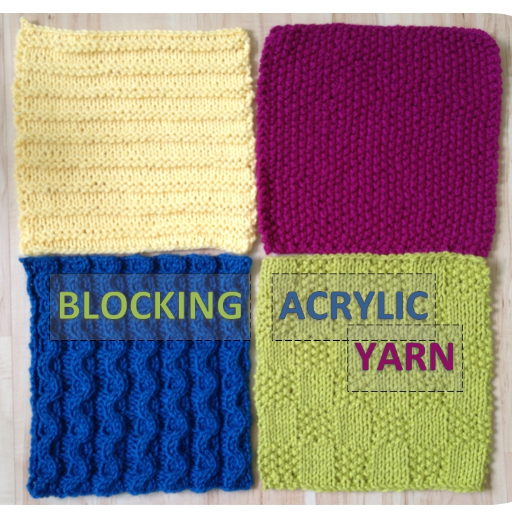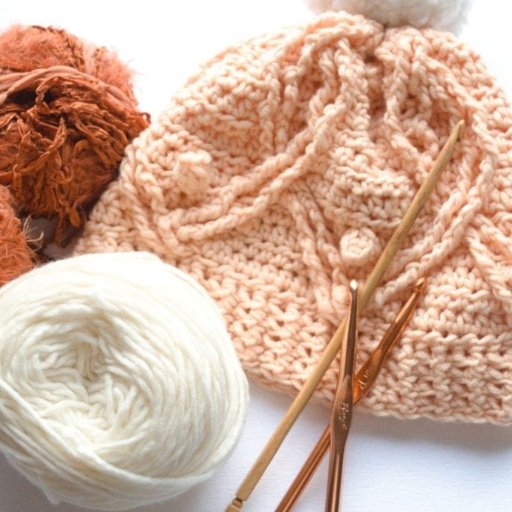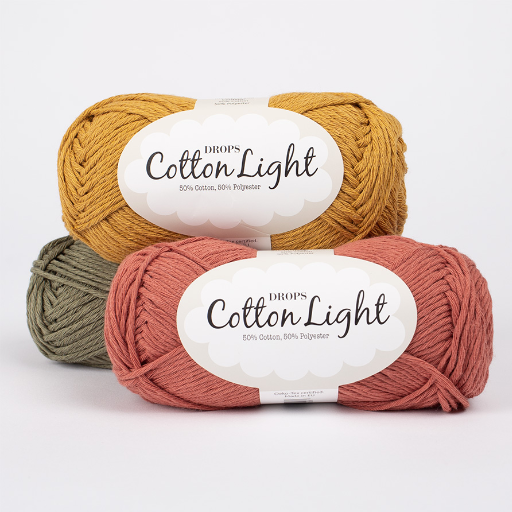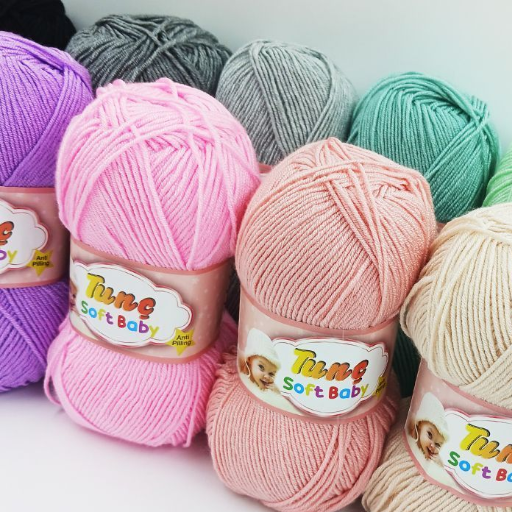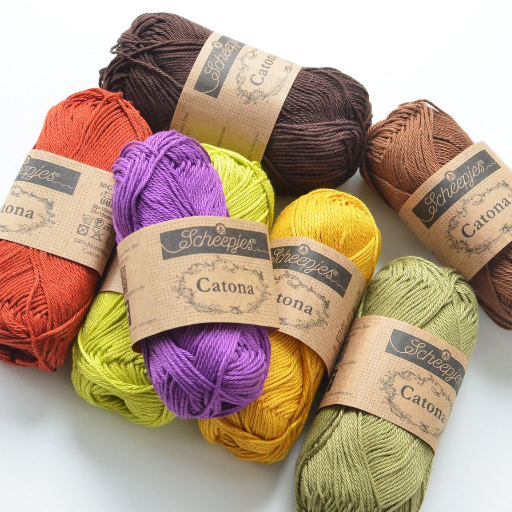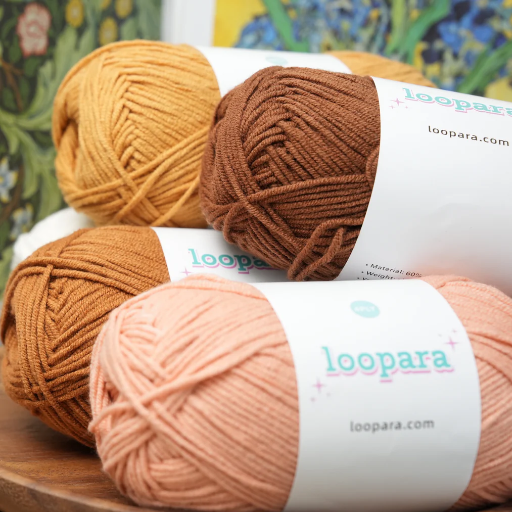The introduction of elastic yarn has transformed and improved the flexibility of knitting and crocheting. It helps create fitted garments, accessories, and decorative pieces with ease. Traditional fibers cannot provide the same scope of application. This guide examines the structure, relevant properties and practical applications of elastic yarn while focusing on professional effective approaches. This guide aims to provide information from basic to advanced elastic yarn methods. Understanding how elasticity affects stitch tension and controlling stretch in complex patterns is the goal of the article. As highlighted in the guide, the guidance from this article will help readers accomplish their stride goals seamlessly while eliminating functional and aesthetic barriers.
What is Elastic Yarn and How is it Used?

Disciplines in sewing such as garment making and knitting or crocheting using thick threads require subtler elastic yarn for achieving precision. It is a one of a kind two in one elastic type yarn. Like mentioned before, elast yarn is used in processes that require precision.
Understanding the Composition of Elastic Yarn
Composed of synthetic elastomers along with natural and synthetic fibers make up elastic yarn. The core of elastic yarn is made of spandex elastane and rubber which is stretchable to lend the fabric its key elastic properties. Other fibers are also incorporated such as polyester, cotton, dyneema, nylon fibers, and wool to make the core material more durable and increase its texture, maintainability, and utility. The combination of these materials makes the resulting composite flexible while being tough and able to withstand various types of fabric. Strain, tensile strength and, desired performance make altering the composite composition customizable for finer control over its elasticity.
Common Applications of Stretch Yarn in Textile
Stretch yarn is now prevalent in everyday garments because of its comfort and flexibility. Here are a few worth noting:
- Athletic and Activewear – There is a significant tendency to use stretch yarn in sports brand textiles. Garments such as leggings, compression garments, and even yoga pants utilize stretch yarn so the wearer can move freely without constraint while snugly fitting the garment.
- Intimate Apparel – Most undergarments have a form fitting and soft nature, attributes provided by stretch yarn. It also assures the wearer of comfort irrespective of body shape or size.
- Denim and Woven Fabrics – The addition of stretch yarn to the fabric enables the production of comfortable and fashionable denim jeans, while also retaining the ruggedness of the material. It is also employed in the woven fabric used for blazers and formal dresses, enabling movement in rigid apparel.
- Medical Textiles – An example of stretch in the medical field is observed in bandages, compression stockings, and orthopedic braces. Stretch yarn provides the required level of supportive fit and pressure in these medical products.
These applications illustrate the versatility of stretch yarn, proving it to be of great importance to almost all industries in the textile market.
Benefits of Using Elastic Yarn in Knitting and Crochet
- Enhanced Fit and Stretchability – Stitch and crocheted materials like socks, gloves or even swimwear made from the elastic yarn are easy to stretch. This means they can form snug, yet adaptable garments we need, thus performing great for forming socks, gloves or swimwear.
- Improved Durability – This is because the elastic nature of the yarn makes it more durable, hence less worn out. There will be negligible tear on the garment which means it will not be overstretched or deformed which makes the finished product last longer.
- Versatile Design Applications – Complex patterns and shapes that can endure repetitive use are made possible because men elastic yarn and traditional fibers have greater design flexibility.
- Resistance to Sagging – Without drooping or loosening, elastic yarn pieces retain their shape even after prolonged use, resolving prevalent problems with fitted clothing and accessories.
These benefits help us understand why elastic yarn is often preferred when making functional knitted and crocheted pieces of high quality.
How to Choose the Right Yarn for Knitting and Crocheting?

- Fiber Content – Natural fibers like wool, cotton, and alpaca will be useful in project requiring warmth and breathability as well as providing warmth. If you need something lightweight and easy on the wallet, then synthetic fibers like acrylic and nylon will do the trick.
- Yarn Weight – The weight of the yarn must correspond with the specifications on the pattern, like lace, worsted, or even bulky. aread from above over here. The weight of yarn significantly affects the finish piece’s texture, drape, and overall appearance.
- Color and Dye Lot – Design colors should be chosen and so they purchase yarn that will color match throughout the design, color uniformity is critical across the project that’s why gradient needs to be from the same dye lot.
- Texture – If the design is intricate then use smooth yarns for the stitches as textured yarns such as boucle or eyelash will hide the detail of the design.
- Washability – Yarn that is more practical and used frequently should be machine washable. more delicate fabric would need to be hand washed or dry clean.
Analyzing all of the factors mentioned above allows you to choose yarn best suited for your knitting or crocheting projects and that is upto your expectation in terms of quality, functionality, and aesthetics.
Factors to Consider When Selecting Stretchy Yarn
- Elasticity and Fiber Composition – Stretchy Sewing Thread has both synthetic and natural fibers like spandex, elastic, nylon and polyester. These fibers have the recoverable elongation more than 100%, inferring that they stretch a lot and also recover well. This makes the thread great for works that require flexibility like socks, baby clothing or fitted garments.
- Durability – Consider the recovery ability of a chosen stretchy yarn after repeated use or washing. It should retain its original shape. Durable blends like sock wool or sock acrylic with elastic materials added to the yarn should provide stretch and longevity to the project.
- Gauge and Weight Compatibility – The gauge and thickness of certain stretchy yarn impacts the final texture and fit of a project. Ensure that the chosen yarn weight balances with the tension of the pattern so that the stretch does not hinder the intended proportions or designs.
- Application-Specific Requirements – Ensure that a chosen yarn for an activewear project or household textiles such as sofa covers is comfortable, looks good, and provides sufficient stretch. Some stretchy yarn performs better in snug fits while some allow for more relaxed movement.
Taking these comprehensive factors into account allows you to make the best choice concerning stretchy yarn for your project, achieving the optimal balance between performance and aesthetics.
Comparing Cotton Yarn and Polyester for Elastic Fabric
While making comparisons between cotton yarn and polyester in context to elastic fabrics, it is important first to understand their basic properties. Cotton yarn, which is a natural fiber, is very breathable and soft making it an excellent option for elbow projects that focus on comfort and being gentle to the skin. It is a good absorber of moisture; however, it has low elasticity without some synthetic material added to it which can all make it less ideal for stretching lots to be elastically stretched.
Polyester is stronger than cotton in these ways when it comes to strings, is a synthetic fiber so happens to be more durable, strong, and great elastically. It also tends to be wrinkle resistant, shrink resistant, and abrasion resistant making it great for jeans of fabric or material that tend to bend a lot and use rigid for long lasting things. Because of the nature of polyester, it can preserve its shape and stretch from above and maintain it over time, even in rough places. Polyester fibers are, however, not as breathable as cotton so they can be uncomfortable to wear against the skin.
1For elastic fabrics, a blend of the two materials is often used, combining the softness and comfort of cotton with the stretch and durability provided by polyester. Ultimately, the choice between these yarns depends on the specific functional and aesthetic requirements of the project, along with factors such as intended use, climate, and care preferences.
Can Elastic Yarn Be Used for Home Decor Projects?

Indeed elastic yarn is very useful for home decor projects, especially those which require flexibility and strength, as well as a snug fit. It works well for making stretchable slipcovers or cushion covers, and even for some decorative storage solutions when stretchability helps maintain shape and assists in creating a fitted look. However, consideration has to be made about the most important features required for a particular project, especially if elasticity is desirable.
Creative Ideas for Using Elastic Yarn in Home Decor
- Stretchable Slipcovers for Furniture
Custom-made furniture often requires elastic fabric to cover them as it makes their features more appealing. Tailor made couch and chair covers can be enhanced using elastic yarn slipcovers which ensure a snug fit and do not slide off while improving the aesthetic value. Slippery chairs or couches can sinch their use with strachable covers making them easy to clean and maintaining polished decor look.
- Customized Cushion Covers
Knit or crochet cushion covers using elastic yarn fit well on cushions ensuring they do not look saggy which enhances their aesthetic value. The most important aspect is that the cushion covers made from knit or crochet will not become loose over time thereby ensuring the comfort and durability which is needed during daily use.
- Decorative Storage Solutions
The scope of use for elastic yarn is huge as it allows for the makiing of stretchable baskets and other pouches which can be used for versatile storage. Unlike other types of storage these addedos can change in size enabling them to be used for many things while also keeping their shape.
- DIY Lampshades and Light Covers
Elastic yarn is perfect for crocheting or knitting lampshades or light covers. Its flexibility enables complex designs that mesh with different frame sizes which contributes texture and depth to the interiors of rooms.
- Wall Hangings and Tapestries
Add elastic yarn to wall decor pieces for enhanced dimensionality and versatility. This characteristic makes it easy to create stretchable wall panels that can fit multiple wall spaces or create active designs.
These creative approaches demonstrate the versatility of elastic yarn and the beauty it could add with its structural properties in home decor.
How to Incorporate Thick Yarn in Your Designs
- Knitted or Crocheted Blankets
Thick yarn is perfect for crafting cozy textures and warm chunky blankets for any space. Even as a beginner, one can create these with oversized needles or crochet hooks in an efficient and straightforward manner.
- Statement Rugs and Mats
Create bold and textural rugs or mats by weaving thick yarn and braiding into them so they can withstand heavy use and stranding far from dull aesthetics. These pieces can serve as a bold accent at the heart of a room.
- Decorative Pillows
Enhance soft covering of cushions by thick yarn, innovatively stitched into beautiful designs. Striking patterns alongside bold colors will surely draw the eye’s attention while complementing home decor of varying styles and placements.
- Wall Art and Sculptural Pieces
With thick yarn, bold designs can easily be don with braiding, macramé, or tassel braiding turning yarn into stunning wall ornaments or sculptural designs. Because the material is thick yet soft, intricate and striking pieces can be born.
- Baskets and Storage Solutions
Use thick yarn to create durable and beautifully crafted storage baskets that fit modern interiors. Crocheting and knitting these items not only gives functional ease but also charm that the edge of the home needs.
Thick yarn allows for big and striking designs integrating it captivates both sight and touch while elevating the space.
What Are the Different Types of Elastic Yarn Available?

These types of elastic yarns serve different purposes depending on their composition and properties. The most common types are:
- Spandex-Blend Yarns
Due to their great elasticity and excellent recovery, these yarns with incorporated spandex fibers are particularly suitable for flexible garments like activewear and swimwear.
- Rubber-Core Yarns
Used in industrial or basic elastic items like waistbands, these rubbercore-wrapped yarns have superior stretch for high-grade elastics.
- Textured Nylon or Polyester Yarns
Moderate elasticity accompanied by a soft touch suitable for stretchy lightweight fabrics is provided by these synthetic yarns enhanced through texturing processes.
- Elastomeric Yarns
Medical textiles and compression garments often utilize these highly stretchable and durable materials enhanced with synthetic polyurethane.
Elastic yarns can be used by designers to achieve ease of use and comfort for a specified type of elastic required for a fabric.
The Role of Spandex and Nylon in Elastic Yarn
The production of elastic yarns cannot be done without spandex and nylon; both of them offer different, yet working together, create a strong value chain. Spandex, or elastane, is particularly important in athletic, medical, and other hyper flexible textiles due to its outstanding extensibility and recovery; enabling fabrics to stretch greatly and yet snap back to shape. The blended yarn tangles seamlessly due to its smooth surface and light weight. In addition, elongation recovery and brittleness enable tested active wear. Lastly, the denier and filament number create highly stretchable and durable textiles, making fitted textiles, stockings, and body shapers an easy task. As such, strong and semi-sturdy garments ranging from active wear to hose are made possible due to the combination of nylon and spandex. Both materials provide a belt of incessant stretching without losing softness, making the final products even more desirable.
How Do You Care for Elastic Yarn in Your Projects?

Each elastic yarn has stretchable qualities that should be preserved with special care given to how it is handled. Wash items by hand in cold water and use a mild detergent for gentle cleaning or if using the washing machine, set the item to a delicate cycle and place it in a mesh laundry bag. Elastic yarn is especially sensitive thus, should never be dried using high heat as this would destroy all elasticity, rather, it is recommended to air-dry the item flat. Further, the projects made from elastic yarn should be stored in a cool dry area free from direct sunlight to prevent fiber deterioration. These different techniques will help retain the comfort, shape, and quality of the projects.
Machine Washable vs. Hand Wash: Caring for Stretch Yarn
Whether hand washing or machine washing is suitable for a project involving stretch yarn depends mostly on the project design and materials used. Considering the label permits machine washing, placing garments made with sturdy yarn blends on a washing machine is generally acceptable. As with any delicate item, use cold water, a gentle cycle, and always place it into a protective mesh laundry bag. Hand washing, however, is the best method for intricate knits and low-weight garments, as it enables greater control and prevents unnecessary movement, avoiding strain on delicate stitches. Even more, forgiving washing methods also call for gentle detergent made from or meant for delicate fibers and prescribe minimal wringing to avoid stressing the yarn’s elastic properties. Shape maintenance alongside preventing distortion requires air-drying flat post-wash, regardless of washing method used. Thoughtful attention to material will strengthen the overall quality and help ensure the stretch yarn design will last for many years to come.
Best Practices for Maintaining Elastic Properties
To preserve the elastic properties of stretch yarn, the elastic characteristics are due to the special polymers framing the elastic components textiles. Taking care of stretch yarn entails following the appropriate care parameters to ensure flexibility is maintained. To outline some, do not wash with hot water or dry using any source of heat as this will severely damage the yarn. Lastly, do not subject to soaking the fabric, vigorous spinning, or machine drying to prevent deforming and overstretching the material.
Secondly, limit contact with direct sunlight when drying or storing the elastic garment as UV light can degrade elastic fibers over an extended period. The material should be flat air dried in a shaded area to maintain structure and integrity. Proper folding and storage are also paramount; items should not be hung for extended periods of time as this is likely to cause stretching or mishaping.
Lastly, refrain from using the garment in a way that would risk overextending the material beyond the limits of its intended use to avoid overstraining. Identifying stretch yarn early on in the wear cycle will allow for maintenance activities to be done, which could include thinner yarns or those exhibiting less elasticity, ensuring care modifications are made to provide optimal endurance while still maintaining prescribed functionality.
What Are the Benefits of Using High Elastic and High Stretch Yarns?

The high elastic and high stretch yarns have some important advantages, especially in areas that need flexibility and comfort. These yarns, for example, have excellent shape recovery and adaptability for activewear, swimwear, and compression clothing. They stretch without losing structure, thus feeling snug without being restrictive, allowing greater comfort and mobility. These yarns also provide durability with respect to repetitive movement or stress, elongating use without losing performance. Through precise tension control and high resilience, high elastic and high stretch yarns support innovative design possibilities while meeting the active requirements for dynamic, performance-centered end uses.
Advantages of Choosing High Elastic Materials for Durability
- Enhanced Wear Resistance
High elastic materials exhibit exceptional durability under continuous usage. Because these products are repeatedly moved towards from stretched to non-stretched positions, elastic fatigue will be replaced by stretch and recovery, hence, static fatigue is avoided.
- Improved Flexibility and Adaptability
The mobility and resistance against tearing or deformation is enhanced due to the elasticity. Because of needing pliability along with structural strength, these materials are perfect for such applications.
- Sustained Performance Under Stress
Even when under high-stress conditions, these materials still showcase the same performance. Be it in dynamic settings or subjected to varying loads, these materials are reliable over time, retaining their structural integrity and strength.
- Lightweight Yet Robust Design
Achieving the optimal balance between weight and strength, these materials prove to be very useful in applications where resilience is needed without increasing bulk.
Exploring High Stretch Options for Performance Fabrics
High stretch performance fabrics have been developed to meet the needs of flexibility, durability, and adaptability. These fabrics use spandex, elastane, or Lycra which are advanced polymers that offer better elasticity and recovery features. One of the critical innovations currently offered by these materials is the 4-way stretch capability which allows the fabric to extend width and length to enhance user comfort and mobility as well.
Breathable and moisture-wicking fabrics also enhance comfort for the user by maintaining dryness during prolonged physical activities. These materials are used in athletic apparel, medical textiles, and industrial grade clothing because of dependable stretch recovery and higher resistance to fabric tears. There are also jaw dropping new production techniques like seamless knitting, along with using recycled fibers which reduces impact on the environment without lowering the quality.
Balance between elongation at break, structural integrity, and additional features creates sharp contours in advanced elastic materials. High-stretch options stand out as an extraordinary evolution in stretchable fabrics designed for the most demanding use cases.
References
Frequently Asked Questions (FAQ)
Q: What is fixation yarn and how is it used in crochet and knitting?
A: Fixation yarn is a type of yarn designed to maintain its shape and elasticity after being used in crochet and knitting projects. It is particularly useful for creating items that require stretch and comfort, such as swimwear and activewear.
Q: Can I use crochet yarn for crocheting items that require high elasticity?
A: Yes, certain types of crochet yarn, especially those made from cotton elastic or synthetic fibers such as polyester or nylon, are ideal for projects that require high elasticity. These yarns help create vibrant colors and maintain the stretch properties necessary for flexible designs.
Q: What is t-shirt yarn and how does it compare to traditional yarn?
A: T-shirt yarn is made from upcycled fabric, typically cotton, and is thicker than traditional yarn. It is ideal for thick crochet projects and DIY crafts, providing a unique texture and vibrant colors that can enhance various creations.
Q: How do I choose the right weight yarn for my project?
A: The right weight yarn depends on the type of project you’re working on. For example, lightweight yarns are suitable for delicate items, while heavier weight yarns are better for thick crochet items. Consider the texture and final look you want to achieve when selecting your yarn.
Q: What are the benefits of using yarn with high elasticity in my projects?
A: Yarn with high elasticity, such as fixation yarn, offers several benefits, including improved stretch and comfort, reduced shrinkage, and the ability to hold its shape over time. This makes it perfect for items like swimwear, athletic wear, and fitted garments.
Q: Are cascade yarns suitable for beginners in crochet and knitting?
A: Yes, cascade yarns are often recommended for beginners due to their softness and ease of use. They come in a variety of colors and weights, making them versatile for various projects and helping new crafters develop their skills.
Q: What is the difference between weft yarns and other types of yarn?
A: Weft yarns are typically used in weaving, whereas other types of yarn, such as crochet yarn, are primarily designed for knitting and crocheting. Weft yarns are woven horizontally across the warp threads, while crochet yarn can be manipulated to create various stitches and patterns.
Q: How do elastic bands enhance the functionality of crochet and knitting projects?
A: Elastic bands can be integrated into crochet and knitting projects to provide additional stretch and support, making them ideal for fitted garments or accessories like hats and bags. They help maintain the shape and provide comfort during wear.








